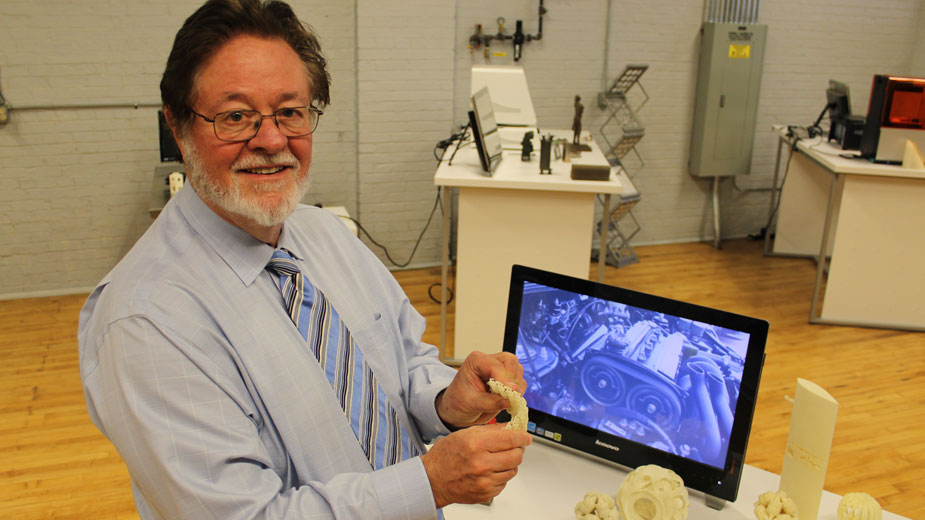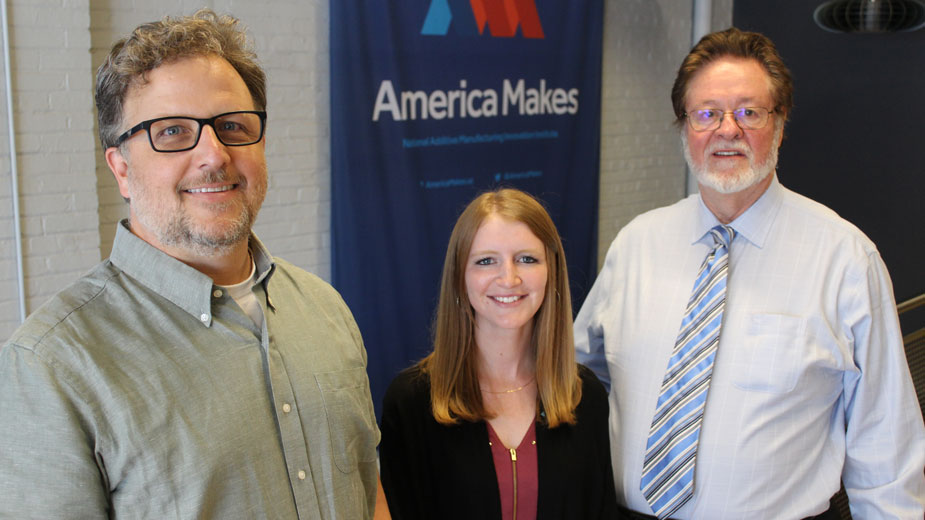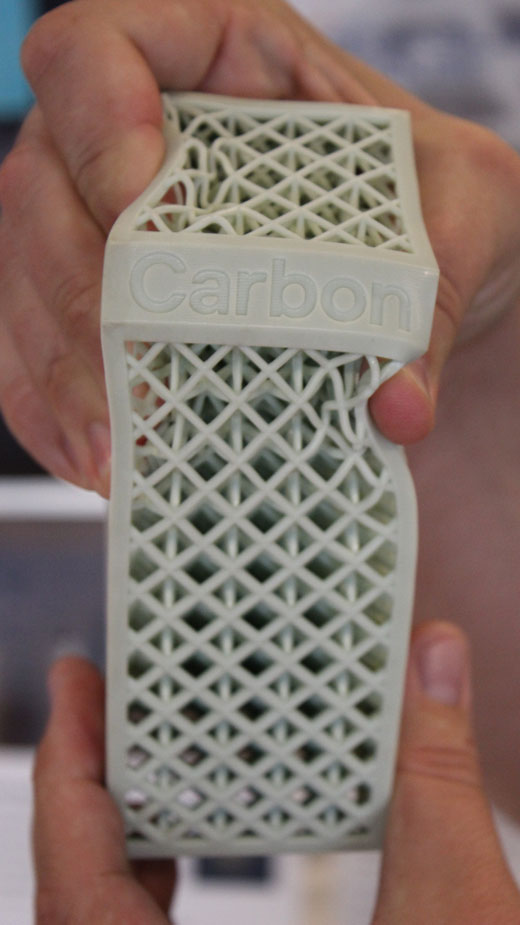With NFL Backing, Future of Helmets Starts Here
By Josh Medore
YOUNGSTOWN, Ohio – When researchers, engineers and NFL officials gather at America Makes in mid-November, it will mark the next step in the league’s march to mitigate the impact of concussions.
It’s a process that’s been nearly a decade in the works. In 2011, the league formed the Health and Safety Committee, with Dr. John York, co-owner of the San Francisco 49ers, helming its advisory committee. Among its chief goals was addressing concussions in the NFL.
As a result, helmets improved and new brands have been introduced, such as the Seattle-based Vicis, whose helmets consistently rank at the top of the NFL’s safety charts, separated into three categories: red, yellow and green.
“Last year there were less than 30 players that wore a ‘red’ helmet. This year there are none. The top ‘green’ helmets, didn’t exist five years ago,” York says. “Their manufacturers existed, but the helmets didn’t. We think that through additive manufacturing, we can get a bigger bump.”
But York and the committee realized there was more that could be done.

“As we gathered information, we started to realize we don’t need to start with the incident and go forward. We realized we could start with the incident and go backwards to find out what’s causing this and if we can stop it,” York says. “It’s a totally different animal than [what physicians do]. That’s for scientists and engineers.”
In May, York went to Detroit with the president of M7 Technologies, Mike Garvey, and representatives from the NFL to visit an expo showcasing the variety of uses for additive manufacturing, including wearables such as shoes and helmets. That trip was the impetus for the creation of the NFL Helmet Challenge, York says.
Kicking off Nov. 13-15 with a symposium at America Makes, the program will award up to $2 million in grants to develop prototype 3D-printed helmets, as well as a $1 million award. The grants will be awarded in March, with the deadline for submissions set for May 2021. More than 250 have already registered for the symposium.
“It’s getting everyone together to understand the problems in the helmets and what additive manufacturing can do, as well as other advanced technologies, to make them better. It’s the chance to get everyone together and brainstorming,” says Ashley Totin, project engineer at America Makes, of the symposium.
For the institute, founded in 2012, the arrival of the NFL will bring with it the chance to show off what’s going on among its 230 member organizations, which range from academic institutions such as Youngstown State University to businesses to government agencies.

“The public usually either thinks of 3D printing as making little trinkets or things they don’t understand. To get something everyone understands in the NFL is amazing for the area,” she says. “They’ve heard of 3D printing but may not understand it, but now they can see what’s happening in their backyard.”
The use of additive manufacturing in athletic equipment isn’t new, but if adopted and widely used in football helmets would bring about a new level of implementation.
In the foyer at America Makes’ downtown Youngstown site, YSU professor Eric MacDonald shows off a 3D-printed material used in the Adidas FutureTech line of shoes. On one end of the lattice, struts connecting each section are thick, creating a block that’s difficult to compress or twist. At the other end, the struts are thin, creating a material that’s easily pliable.
“It’s just as durable as anything you’d use in traditional polymer or elastimer manufacturing,” says MacDonald, the Friedman Chair in Manufacturing at YSU. “But it’s something you can’t do with a mold. You can, across 3D space, change the features’ sizes to help protect players [with 3D-printed materials].”
Even between each cell in the lattice block, the thickness can be altered to create a uniquely customized product that’s designed and built just for each individual player.

Already, 3D-printed helmet linings are in use, made from scans of a player’s head. Among the NFL’s player safety moves since the creation of the Health and Safety Committee has been to limit players to one helmet shell per season – exceptions are made for broken helmets – which allows the padding inside to be fully broken in and better fit to their head.
With a background in electrical engineering, MacDonald’s research has focused on how 3D printing can be used to make wearables and how sensors can be integrated into them. Such integration could further improve the safety of helmets.
“There’s a diversity of things you can measure: vibration, acceleration, rotation, magnetic fields if you want to know which way you’re facing, pressure, temperature, humidity, chemistry, blood, sweat, stress,” he says. “Within the context of an athlete, there are so many things you can measure and you put all of this within the structure and at the same time protect their head.”
The addition of such technology could further add to the base of knowledge developed by the NFL since it began keeping injury data on concussions, York says.
“If a player is hit in the ear hole, there’s a higher incidence of concussion than if he gets hit up higher. There’s a higher incidence if he’s hit at the top of his head or the back,” he says. “Those are all mapped out. You try to figure out what can be done to create a safer, more effective helmet.”
And additive manufacturing isn’t just limited to helmets either. It’s already being used in shoes and could be expanded to everything from shoulder pads to the playing surfaces, York says. He notes that 60% of injuries in the NFL happen below the waist and that those injuries, such as those affecting knees and ankles, tend to keep players off the field longer.
“The emphasis isn’t just on concussions, it’s on safety throughout the entire game,” he says of the need for the NFL to invest time and resources into additive manufacturing. “We have helmets, which have been improved, without additive manufacturing, within the last five years. We’ve shown we can decrease, to an extent, concussions. But we’re not where we need to be.”
It’s for that reason that the Helmet Challenge kickoff will take place in downtown Youngstown.
“They’re bringing additive manufacturing and a whole new approach and concept to how we’re going to approach helmets in the future,” York says. “America Makes is here. Our family, owning the 49ers, is here. We know the community. We know this can be done. With the NFL coming here, it’s another feather in Youngstown’s cap and shines a further light on the additive manufacturing community that is growing within Youngstown.”
Copyright 2024 The Business Journal, Youngstown, Ohio.


